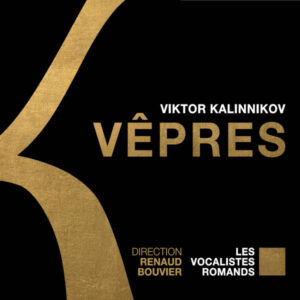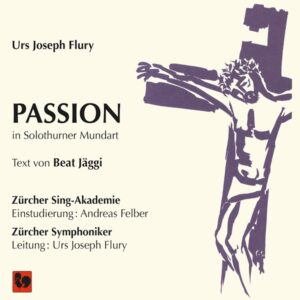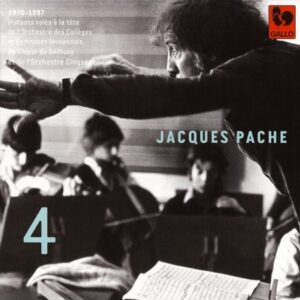Extraits / Excerpts
Haydn: Missa in Angustiis "Nelson Mass" (Live) - Orchestre de Chambre de Lausanne - Chœur de Chailly-sur-Clarens - Andras Farkas
Franz Joseph HAYDN: Missa in Angustiis “Nelson Mass”, in D Minor, Hob. XXII:11: No. 1 Kyrie – No. 2 Gloria/ Gloria in excelsis Deo – No. 3 Gloria/ Qui tollis – No. 4 Gloria/ Quoniam – No. 5 Credo/ Credo in unum Deum – No. 6 Credo/ Et incarnatus est – No. 7 Credo/ Et resurrexit – No. 8 Sanctus – No. 9 Benedictus – No. 10 Agnus Dei/ Agnus Dei qui tollis – No. 11 Agnus Dei/ Dona nobis pacem
Kathrin Graf, Soprano
Clara Wirz, Alto
Pierre-André Blaser, Tenor
Michel Brodard, Bass
André Luy, Organ
Chœur J.S. Bach de Lausanne
Chœur de Chailly-sur-Clarens
Orchestre de Chambre de Lausanne, Andras Farkas, Conductor
https://www.ocl.ch/
The Nelson Mass is the third of Haydn’s last six great masses. Written between July 10 and August 31, 1798, it was initially entitled only “Missa. Later, the composer, whose 250th anniversary is being celebrated this year, added the words “Missa in Angustiis” (Mass for a time of trial), which clearly situates the dramatic context of the Napoleonic wars in which the work was written. It owes its name of “Nelson Mass” to the fact that the master wrote certain parts of the mass after the news of the victory at Aboukir (August 1-3, 1798). Haydn seems to have wanted to express, by means of trumpet calls at the end of the Benedictus, his enthusiasm for Admiral Nelson, victorious over the French army. The latter attended a performance of the mass two years later, while at the court of Prince Esterházy, for whom Haydn was the appointed composer.
This work was composed three years after Haydn’s second stay in London, between the two oratorios “The Creation” and “The Seasons”. One senses the artistic impulse that the composer, then 66 years old and covered with glory, underwent during his trip to England. The influence of Handel’s oratorios is particularly noticeable, with a breadth and grandeur combined with the ever-surprising freshness of Haydn’s characteristic musical ideas.[show_more more=”Show More” less=”Show Less”]
The J.S. Bach Choir of Lausanne
In December 1928, some singers of the Youth Choir of the Free Church of Lausanne, eager to approach a more demanding music than the one they had been singing until then, got together to give a Christmas concert in the Terreaux Chapel. Johann Sebastian Bach was on the program with, among others, the cantata no 91 “Blessed be thy name Jesus Christ”. Strengthened by this first experience and led by Pierre Pidoux (who was to become the eminent organist and musicologist we know), these young people decided to prepare the “Magnificat” and it was in May 1929 that the modest ensemble (24 singers and 12 musicians), close to those favored by the Leipzig Cantor, premiered this work in Lausanne. The Lausanne public was enthusiastic about it. Taking the name of the great composer, the choir thus founded went from discovery to discovery: numerous cantatas, the Passions according to St. Matthew and St. John, the Mass in B, not to mention works by Schutz, Buxtehude, Goudimel, Palestrina. In 1947, a new and exciting experience: Arthur Honegger’s King David. Appointed organist in Montreux, Pierre Pidoux left the Bach Choir in 1948. He was replaced by Pierre Colombo, then by Charles Dutoit, Michel Corboz and Jean-Pierre Moeckli. Over the years, the ensemble had grown to the size of a large oratorio choir. It periodically performed works by J.S. Bach, of course, but also those of all the great composers. Among the most original works, some of which are not often sung, are a Magnificat, a Laudate Pueri and a Gloria by Monteverdi, Handel’s Joshua, Mendelssohn’s Elijah, Brahms’ German Requiem, two Psalms and Kodaly’s Pange Lingua. To celebrate its 50th anniversary, the Choir gave two concerts: in the Cathedral, at the end of December 1978, the first three cantatas of J.S. Bach’s Christmas Oratorio, after having offered the Lausanne public a refined entertainment in May with the concert version of Henry Purcell’s opera, “The Fairy Queen”, based on Shakespeare’s A Midsummer Night’s Dream.
Since 1979, the Bach Choir, under the expert baton of Andras Farkas, has given two premieres in Lausanne: Mozart’s Missa Longa and the Te Deum by the great Hungarian composer Zoltan Kodaly.
The Choirs of Chailly-sur-Clarens
The plural of this name is explained by the history of the foundation of this choir: the men’s choir of the village of Chailly-sur-Clarens, founded in 1892, decided in 1936, under the impulse of its director, Mr. Robert Piguet, singing teacher at the College of Montreux, to join forces with an occasional women’s choir to perform works that were not part of the traditional repertoire of men’s choirs. This is how the two choirs performed Handel’s Samson and, in 1942, Doret’s Davel with the support of the Orchestre de la Suisse Romande. From then on, the two groups decided to legalize their union and created a mixed choir, without abandoning the activity and the traditional repertoire of the men’s choir. Under the direction of Robert Mermoud from 1948 onwards, the choir continued to cultivate both popular and oratorio music. The choir sang works by Honegger, Frank Martin, Mozart, Brahms, Robert Mermoud, etc. The first performance in French-speaking Switzerland of H. Sutermeister’s Requiem (1959) is a milestone. In 1968, Michel Hostettler succeeded Robert Mermoud. Under his direction, the choir performed works by Haydn (The Creation), Bernard Reichel, Frank Martin, etc. In 1980, Andras Farkas took over the baton and allowed the Bach Choir to be associated with the Chœurs de Chailly for the preparation and performance of the Nelson Mass, which took place on February 4 and 5, 1982 at the Cathedral of Lausanne and at the Maison des Congrès in Montreux. The Choir of Chailly was also called to participate in the creation of the show “Lo Scex que plliau”, music by Michel Hostettler on a text by Henri Deblué, given in September 1982 in Montreux.
Andras Farkas
Andras Farkas was born in Budapest in 1945 and completed his musical studies at the Bela Bartok Conservatory in Budapest. He continued his studies at the Vienna Academy of Music where he studied horn and conducting. Since 1972, he has been a regular guest conductor with the best Hungarian orchestras. In 1974, he moved to Lausanne and became successively director of the Choral Society of L’Orient, of the choir “La Persévérance” of Vallorbe, of the J.-S. Bach Choir of Lausanne and of the Choirs of Chailly/Clarens. It is with the Bach Choir, the Persévérance of Vallorbe and the Orchestre de la Suisse Romande that he gave the first Lausanne audition of Kodaly’s Te Deum in 1980. In 1982, he conducted the Christmas concert of the Orchestre de Chambre de Lausanne with the Bach Choir. He regularly gives symphonic concerts and recordings in Hungary, conducting the first Hungarian performance of Frank Martin’s Ballad for Cello and Orchestra and a cycle of Lieder by his father, the composer Ferenc Farkas. He has also made recordings for the Radio Suisse Romande with the Orchestre de Chambre de Lausanne and the Orchestre de la Suisse Romande. Since 1976 he has been a contributor to the Revue Musicale Suisse and in 1981 became a member of the Music Commission of the Société cantonale des Chanteurs Vaudois.
[/show_more]













